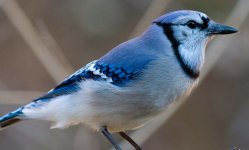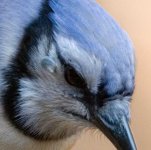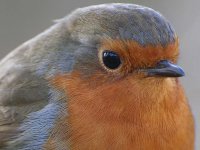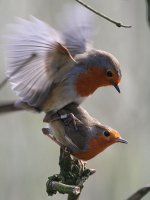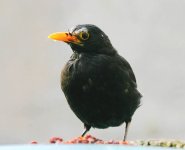Unreal_Birds
Member
Hello everybody,
I am a new member of these forums, so I hope you will be tolerant if I make mistakes or step on any toes in where and how I post. Thanks!
This topic might well seem to have been better suited to the software forum, but I have posted here because I feel that it has more to do with what and how one shoots than the after-processing. My own plans for my pictures dictates what I need and how I go about getting it.
I would like to ask each of you – what is your level of tolerance for, or what do you permit yourself to change in an existing image? I can see, from looking at the web sites and galleries of many of this forum’s posting members, that many of you are comfortable with sharpening, and with tonal, and color correction. But will you change the content of the picture? How much, where, and when?
Here is a hypothetical case:
Suppose the first of the attached photos was of some extremely rare and desirable bird that you have sought to photograph for many years (yes, it is a common Blue Jay, but pretend it is not…). You have finally managed to get this one nice, sharp picture of the bird, but upon looking at it closely, you discover that it has a very large, very bloated and disgusting tick attached to the side of its head (it does – if you doubt it, see the second of the attached photos). What would you do?
1. Leave it. You never change the content of your photos.
2. Remove it, but tell everybody that you did so, in the interest of honesty and because you are ashamed that you did so.
3. Remove it, and never tell a soul.
Further, I would be interested to know, if you have the time, your answers to the following questions (assuming, hypothetically or not, that you have Photoshop and know how to use it). My own answers are in brackets after each question:
1. You will retouch blemishes on your photos – bits of dust or scratches. [Yes]
2. You will make minor alterations to the background content of an image – remove annoying branches, or spots, or other distracting bits of stuff. [Yes]
3. You will make major alterations to the background such as swapping in a new/better sky or removing a large distracting object (house, car, etc.). [Yes]
4. You will make minor corrections to the bird such as removing the tick in the example image, or cleaning up a dirty rear-end, or removing dripping bird seed from a head. [Yes]
5. You will make major corrections to the bird such as moving legs, adding feet, adding a tail, closing a mouth, etc. [Yes]
6. You will move the entire bird into another scene. [Yes]
7. You will put the bird into scenes into which such a bird would not naturally or willingly go. [No]
If you answered no to any of the questions, I would like to know why. In my case, my No to question 7 is because I feel that a bird that does not act correctly is not a bird any longer. It is merely a decorative shape.
To expand a little bit on how these decisions affect ones shooting behavior, in my case, because I am a compositor, I need to have the birds be of consistent size and orientation, and the light to be diffuse (never direct). The background and setting is totally irrelevant to me because I always move the birds to a new scene. Therefore, I shoot in a carefully arranged setup that meets these needs.
Sorry for the length of this post. Thanks for your patience!
-Julie
unrealnature.com
[I know that many people are strongly opposed to obvious image manipulation. If that is the case for you, please feel free to express your opinion; I am comfortable with, and genuinely interested in all attitudes toward digital imagery. Thanks.]
I am a new member of these forums, so I hope you will be tolerant if I make mistakes or step on any toes in where and how I post. Thanks!
This topic might well seem to have been better suited to the software forum, but I have posted here because I feel that it has more to do with what and how one shoots than the after-processing. My own plans for my pictures dictates what I need and how I go about getting it.
I would like to ask each of you – what is your level of tolerance for, or what do you permit yourself to change in an existing image? I can see, from looking at the web sites and galleries of many of this forum’s posting members, that many of you are comfortable with sharpening, and with tonal, and color correction. But will you change the content of the picture? How much, where, and when?
Here is a hypothetical case:
Suppose the first of the attached photos was of some extremely rare and desirable bird that you have sought to photograph for many years (yes, it is a common Blue Jay, but pretend it is not…). You have finally managed to get this one nice, sharp picture of the bird, but upon looking at it closely, you discover that it has a very large, very bloated and disgusting tick attached to the side of its head (it does – if you doubt it, see the second of the attached photos). What would you do?
1. Leave it. You never change the content of your photos.
2. Remove it, but tell everybody that you did so, in the interest of honesty and because you are ashamed that you did so.
3. Remove it, and never tell a soul.
Further, I would be interested to know, if you have the time, your answers to the following questions (assuming, hypothetically or not, that you have Photoshop and know how to use it). My own answers are in brackets after each question:
1. You will retouch blemishes on your photos – bits of dust or scratches. [Yes]
2. You will make minor alterations to the background content of an image – remove annoying branches, or spots, or other distracting bits of stuff. [Yes]
3. You will make major alterations to the background such as swapping in a new/better sky or removing a large distracting object (house, car, etc.). [Yes]
4. You will make minor corrections to the bird such as removing the tick in the example image, or cleaning up a dirty rear-end, or removing dripping bird seed from a head. [Yes]
5. You will make major corrections to the bird such as moving legs, adding feet, adding a tail, closing a mouth, etc. [Yes]
6. You will move the entire bird into another scene. [Yes]
7. You will put the bird into scenes into which such a bird would not naturally or willingly go. [No]
If you answered no to any of the questions, I would like to know why. In my case, my No to question 7 is because I feel that a bird that does not act correctly is not a bird any longer. It is merely a decorative shape.
To expand a little bit on how these decisions affect ones shooting behavior, in my case, because I am a compositor, I need to have the birds be of consistent size and orientation, and the light to be diffuse (never direct). The background and setting is totally irrelevant to me because I always move the birds to a new scene. Therefore, I shoot in a carefully arranged setup that meets these needs.
Sorry for the length of this post. Thanks for your patience!
-Julie
unrealnature.com
[I know that many people are strongly opposed to obvious image manipulation. If that is the case for you, please feel free to express your opinion; I am comfortable with, and genuinely interested in all attitudes toward digital imagery. Thanks.]
Attachments
Last edited:




